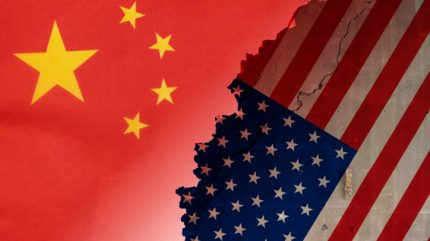
Just before Christmas in 2021 President Biden took a strong stance against alleged forced labour in China’s Xinjiang region by banning all products imported from the region.
For the apparel sector in particular, this meant many fashion brands and retailers made a conscious effort to avoid any trace of Xinjiang cotton in their supply chains. And with isotopic testing in full force at the US border, even Xinjiang cotton goods made in other sourcing destinations such as Vietnam before heading to the US cannot escape the rules.
Up until recently, China had remained quiet on the issue, but there are now reports circling that the Chinese Ministry of Commerce has launched an investigation into US fashion conglomerate PVH for boycotting its Xinjiang-made goods.
Apparel as piggy in the middle of social responsibility war
The tensions between the US and China have been building for quite a while now, not to mention the fact two US senators introduced the No Funds for Forced Labor Act last week to stop the US from supporting international projects that involve China’s Xinjiang Uyghur Autonomous Region (XUAR).
It begs the question of whether fashion brands and retailers will become the ‘piggy in the middle’ of the ongoing trade war between the US and China in future?
It’s important to note that China has always denied allegations of forced labour in its Xinjiang region. This area is the leading producer of cotton in China and it is widely reported that it accounts for 20% of the world’s cotton production and 80% of China’s domestic cotton production.
The timing of China speaking out against PVH is also worth highlighting as the Chinese government is actively trying to give its ailing economy a boost.
China is in the midst of one of its biggest slumps since becoming a global superpower and only two weeks ago (24 September) its central bank unveiled a huge stimulus package to try and get its economy moving again.
Local authorities will have the backing of up to $286bn in extra borrowing by the state, allowing them to intervene in real estate markets, including buying empty properties.
From a manufacturing and industry point of view, China’s profits are also suffering with a slump in August being attributed to a “lack of effective market demand” as well as the impact of “natural disasters such as high temperatures, heavy rains, and floods,” according to NBS statistician Wei Ning.
Given this rather bleak backdrop, perhaps China is using PVH as a warning signal or example for other fashion brands and retailers to show it needs them to stop avoiding its largest cotton-producing region.
Why PVH was chosen to make this exemplary warning is another key question. China’s consumer market is arguably a potential growth area for PVH and its brands, which include well-known names such as Tommy Hilfiger and Calvin Klein, so perhaps it is inadvertently saying “if you want to make money from selling to our consumers you are going to have to play by our rules”.
However, the dilemma for other global fashion brands and manufacturers sitting in the middle of the ongoing icy politics between the US and China is whether they should work with China on a middle-ground solution on Xinjiang or step away from sourcing in the region altogether.
But one thing is certain for the global fashion brands and retailers that make good profits from selling to Chinese consumers and even partly- manufacture their goods within China; they will have to figure out a way to walk a very tricky tightrope between the East and West.



